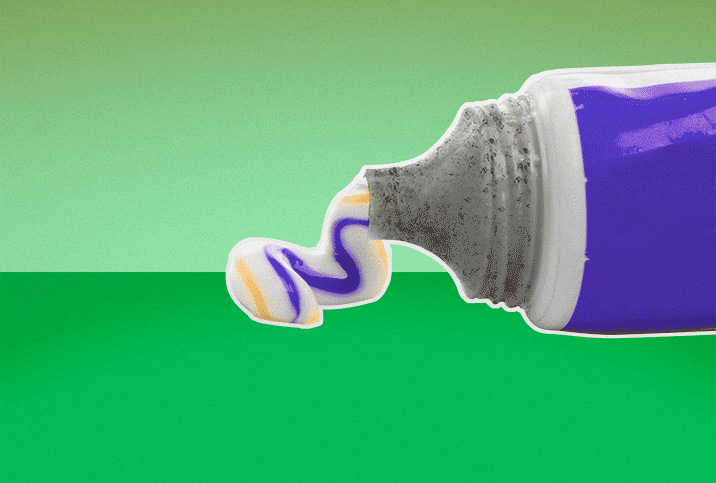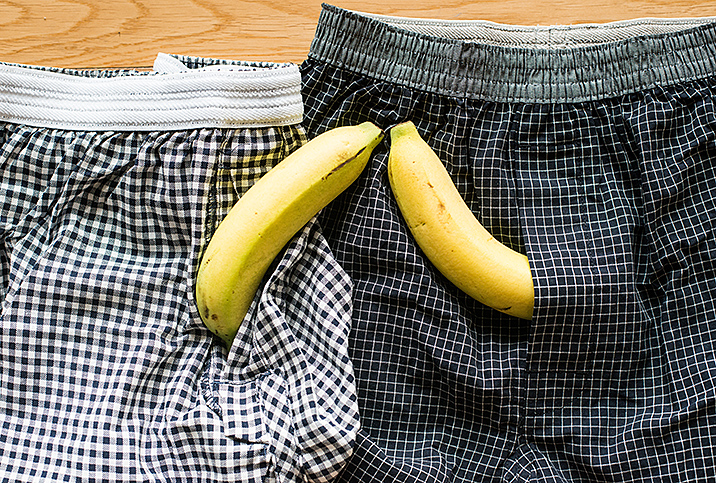How Can You Prevent Smegma Build-Up? Take Control of Your Foreskin

For people who don't know or remember, a penis' foreskin detaches from the head in the first decade of a young man's life, and dead skin cells and residue naturally appear between the subsequent layers of skin.
This accumulation commences with the separation of foreskin and glans, but it isn't unique to any specific time of life for a man or for people assigned male at birth (AMAB). Residue buildup makes regular hygiene and attention imperative to control smegma production and prevent complications.
Smegma, like most genital emissions, goes underappreciated in our society. Rather than merely being an unavoidable byproduct, and at worst a liability, smegma is nature's lubricant.
As anyone familiar with an erection can tell you, the head of the penis not only hardens but grows in size as well. However, the foreskin stays the same size. It is flexible due to the foreskin's thinness, but only retracts thanks to its relaxed muscular fibers. Regardless of a yielding foreskin or relaxed muscles, that movement could still be dry and extremely uncomfortable without lubrication.
What is smegma?
Smegma production occurs at a steady rate with even distribution across the penile head. The process of smegma formation is relatively simple, as living skin cells never stop growing and moving toward the surface. Once there, these cells undergo fatty degeneration and separate from the penis to form fresh smegma.
Smegma isn't biologically necessary in prepubescent children, but it still appears. A child's smegma specifically is thought to contain keratin, an essential chemical for their overall growth. Keratin buildups appearing as firm white growths occur only in newborns, typically in the mouth.
These growths are known as Epstein pearls and very rarely could appear on the tip of a newborn's penis. Regardless of chemical makeup, keeping smegma's presence healthy is about quick turnover.
What's a good smegma treatment?
"[Smegma] is normal, but can build up and create a home for the organisms that live on our skin, such as bacteria and fungus," said Purvisha Patel, a Memphis-based dermatologist. "Gently pulling back the foreskin and washing the area of skin overlap with soap and water is recommended. Do not use alcohol or astringents in this area, though, as the skin is delicate there and it would not only hurt but also disrupt the skin barrier, causing damage to the skin."
Patel describes the all-too-familiar balance of cleanliness and avoiding genital irritation. Retracting the foreskin should never be forced—a little bit of impatience or roughness can lead to lifelong penile trauma. But parents of young children are responsible for keeping their genitals clean.
Patel added that considering that the rate of circumcision is declining in the United States, we may soon see a generation of parents with uncircumcised babies who may not have firsthand experience with foreskin hygiene and don't know how to keep the foreskin clean.
Why does smegma build-up?
Certain conditions may contribute to smegma buildup and what's known as acquired phimosis, or trouble retracting a previously functioning foreskin over the penis head. This can lead to discomfort but is generally resolvable with treatment.
Eric Chung, an inventor and urology professor at Macquarie University Hospital, spoke on risk factors for phimosis in a statement: "Men—both young and old—can develop phimosis (older men with conditions such as diabetes may experience a buildup of glucose under the foreskin)."
Chung recommends older men seeking treatment for phimosis, which they will most certainly notice the side effects of, be tested for diabetes as a precautionary measure. While advanced phimosis is typically treated with a steroid cream or adult circumcision, Chung and associates are developing a noninvasive foreskin expander. Regardless of when that product becomes available, it's interesting that so few options for treatment have previously been explored.
How do you reduce smegma?
Patel pointed out that not everything resembling smegma is necessarily produced by the body. If lubricant isn't properly cleaned following a sexual encounter, or any other chemical is left unattended in the groin, these substances could find their way into the delicate space between the foreskin and the penis, and either mimic smegma or create other, more dangerous lookalikes.
"If there is thicker, whitish discharge with tenderness and redness of the skin, there could be an overgrowth of yeast or bacteria in the area," Patel said. "This needs to be treated and seeing a doctor is recommended. Any product that is placed in the groin, such as powders or diaper ointments, can get behind the foreskin and look like smegma."
"Gently pulling back the foreskin and washing the area of skin overlap with soap and water is recommended. Do not use alcohol or astringents in this area, though.'
It should also be noted smegma accumulation may not just be concerning for those with a penis. While smegma is not carcinogenic and theories remain disputed as to whether the substance contributes to penile cancer, some urologists have proposed the transfer of smegma into the vagina could lead to cervical cancer.
The bottom line
Genital hygiene is something everyone should have as a high priority in their regimen of cleanliness. Keeping tabs on the hygiene of your uncircumcised penis is important to your overall health. Any pain or a changed appearance in your penis is always a reason to go to a doctor for professional advice.


















